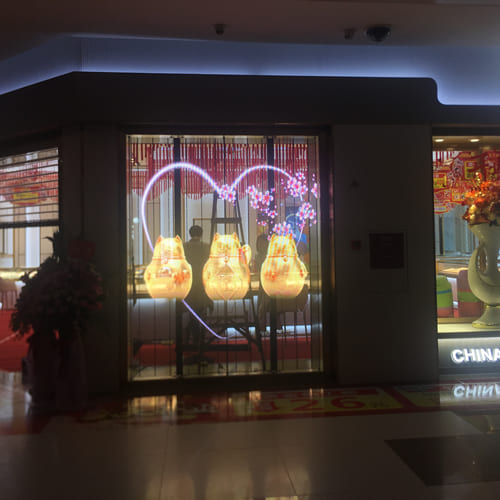Maintaining an LED mesh screen requires proactive care tailored to its transparency, outdoor exposure, and delicate structure. Follow this comprehensive maintenance guide to ensure longevity and peak performance:
Daily/Weekly Maintenance
-
Visual Inspection
- Check for dead pixels, color inconsistencies, or flickering sections.
- Verify cable integrity (look for fraying, loose connectors, or moisture ingress).
- Inspect mounting hardware (ensure hooks, bolts, and tension cables are secure).
-
Cleaning
- Tools: Soft lint-free cloth, low-pressure air blower (<30 PSI), isopropyl alcohol (70% diluted).
- Steps:
- Blow dust from gaps between modules before wiping.
- Gently wipe LED surfaces in one direction (avoid circular scrubbing).
- Never use water jets (risk of short circuits) or abrasive cleaners.
- Frequency: Every 2 weeks (dusty areas) / Monthly (clean environments).
Monthly/Quarterly Tasks
| Task |
Procedure |
| Pixel Calibration |
Run uniformity tests; adjust color/brightness via control software. |
| Power System Check |
Test voltage stability (±5% tolerance) at driver boxes. Replace swollen capacitors. |
| Software Updates |
Update control system firmware to fix bugs/improve stability. |
| Structural Audit |
Check tension in hanging cables; inspect for corrosion (esp. coastal areas). |
Biannual/Annual Maintenance
-
Thermal Management
- Clean ventilation gaps in power cabinets (prevents driver overheating).
- Reapply thermal paste on driver heat sinks if temperatures exceed 60°C.
-
Environmental Protection
- Outdoor Screens:
- Reseal IP-rated gaskets around modules.
- Test waterproofing by spraying mist (not direct water!).
- Salt/Industrial Areas: Apply anti-corrosion coating to metal parts.
-
Component Testing
- Measure LED brightness decay (replace strips >20% output loss).
- Swap aging data cards if signal errors occur >1/month.
Critical Repair Protocols
- Dead Modules:
- Isolate the module via software → Replace with same batch spare (color consistency).
- Never mix pixel pitches!
- Water Damage:
- Immediate action: Power off → Dry with desiccant packs → Check PCB corrosion.
- Image Ghosting:
- Reset the problematic zone → Perform pixel refresh (erases burn-in).
Preventative Measures
- Environmental Shields:
- Install windbreaks or overhangs for screens in sand/dust-prone zones.
- Use UV-protective coatings in high-sunlight regions to prevent yellowing.
- Content Management:
- Avoid static logos >2 hours → Use pixel-shifting features.
- Set auto-brightness schedules (e.g., reduce to 30% at night).
Spare Parts Inventory
Keep these on hand:
-
5% LED modules (match pitch/batch code)
- Replacement cables (data/power, IP-rated)
- Driver power supplies (extra 10% of total units)
- Gaskets & mounting clips
Cost-Saving Tips
- Training: Teach onsite staff basic diagnostics (e.g., rebooting controllers, swapping single modules).
- Remote Monitoring: Use IoT sensors to track temperature/humidity/failures in real time.
- Warranty Leverage: Document all maintenance to claim free repairs for premature failures.
When to Call Professionals
Seek expert help for:
- Structural re-tensioning (cables sagging >5°).
-
10% pixel failure in one zone (indicates deeper power/control issues).
- Post-storm damage assessment (hidden water/corrosion risks).
⚠️ Never Attempt: High-voltage repairs, welding near screens, or disassembling modules without factory training.
Proactive maintenance can extend an LED mesh screen’s lifespan beyond 100,000 hours. Partner with your supplier for annual health checks – many offer service contracts covering calibration, parts, and emergency support for ~5–10% of the screen’s value/year. Prioritize environmental protection and swift minor repairs to avoid costly overhauls! 🛠️
 Outdoor LED Display Panel Price
Outdoor LED Display Panel Price
 What professional LED pixel calibration tools are there?
What professional LED pixel calibration tools are there?
 How to perform pixel calibration on an LED mesh screen?
How to perform pixel calibration on an LED mesh screen?
 How to choose the right LED mesh screen?
How to choose the right LED mesh screen?
